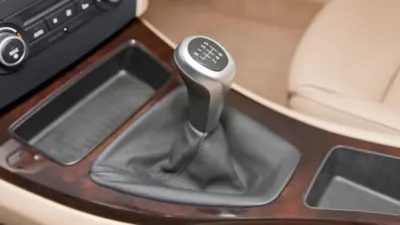October 25, 2024
What is a manual transmission?
A manual transmission, often referred to as a stick shift, is a type of vehicle transmission system in which the driver is responsible for manually shifting gears. Unlike an automatic transmission, which changes gears on its own based on speed and engine load, a manual transmission requires the driver to engage and disengage gears using a clutch and gear lever (also called a gear stick or shifter).
Key Components of a Manual Transmission:
- Clutch Pedal: This is the third pedal (alongside the brake and accelerator) that the driver presses to disengage the engine from the transmission. It allows the driver to shift gears without damaging the engine or transmission.
- Gear Lever (Shifter): The gear lever is used by the driver to manually select the appropriate gear. In most vehicles, the gear lever is used to shift through a set of gears (typically 5 or 6 gears for forward driving and one reverse gear).
- Transmission Gears: Inside the transmission, there are multiple gears (usually 5 or 6 forward gears and one reverse gear). The driver manually selects the gear that corresponds to the desired speed and power output of the engine.
- Flywheel: The flywheel connects the engine to the transmission and helps smooth out engine power. When the clutch pedal is released, the flywheel re-engages the engine with the transmission.
How Manual Transmission Works:
- Starting the Vehicle: When starting the car, the driver presses the clutch pedal to disengage the engine from the transmission, places the car in neutral, and then starts the engine.
- Shifting Gears: As the vehicle accelerates, the driver needs to shift through gears. The clutch pedal is pressed to disengage the engine, the gear lever is moved to the next gear, and then the clutch pedal is slowly released, allowing the engine and transmission to re-engage.
- Downshifting: When slowing down, the driver must downshift to a lower gear to maintain control over the vehicle and prevent the engine from stalling.
- Stopping: To stop the vehicle, the driver presses the clutch pedal, shifts the transmission into neutral, and applies the brake.
Advantages of a Manual Transmission
-
Greater Control
One of the biggest advantages of driving a manual transmission is the increased control you have over the car. When you shift gears manually, you can select the perfect gear for the driving conditions, allowing you to accelerate more quickly, or slow down more smoothly.

-
Better Fuel Economy
Manual transmissions are typically more fuel-efficient than automatic transmissions. With a manual transmission, you have more control over the car’s engine, allowing you to shift gears at the most efficient RPMs, resulting in better gas mileage.
-
Lower Maintenance Costs
Manual transmissions are generally less complex than automatic transmissions, and as a result, they are often less expensive to maintain. Manual transmissions also tend to be more durable and longer lasting than automatic transmissions, reducing the likelihood of costly repairs.
Tips for Driving a Stick Shift
-
Know Your Clutch
The clutch is one of the most important components of a manual transmission. To shift gears, you need to press down on the clutch pedal, which disengages the engine from the transmission. When you release the clutch pedal, the engine and transmission are re-engaged, allowing the car to move. It’s important to practice with the clutch to become comfortable with the feel of the pedal.
-
Match Engine RPMs
-

When shifting gears, it’s important to match the engine RPMs to the speed of the car. This helps to ensure a smooth shift and prevent the car from stalling.
-
Don’t Ride the Clutch
Riding the clutch, or keeping the clutch pedal partially pressed down, can cause premature wear and damage to the clutch. To avoid this, make sure to fully release the clutch pedal when the car is in gear.
Conclusion
Manual transmissions are a great choice for those who want more control over their driving experience. With greater control, better fuel economy, and lower maintenance costs, there are plenty of reasons to consider a stick shift for your next car. With a little practice and patience, anyone can become comfortable driving a manual transmission.
